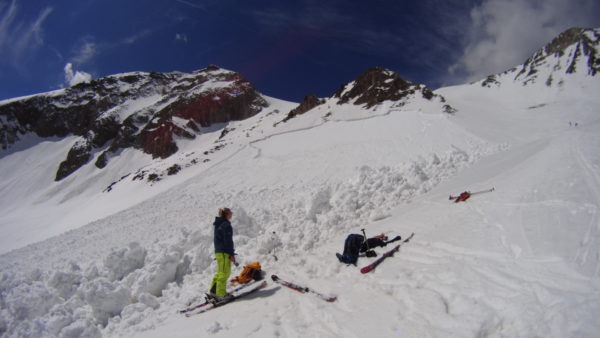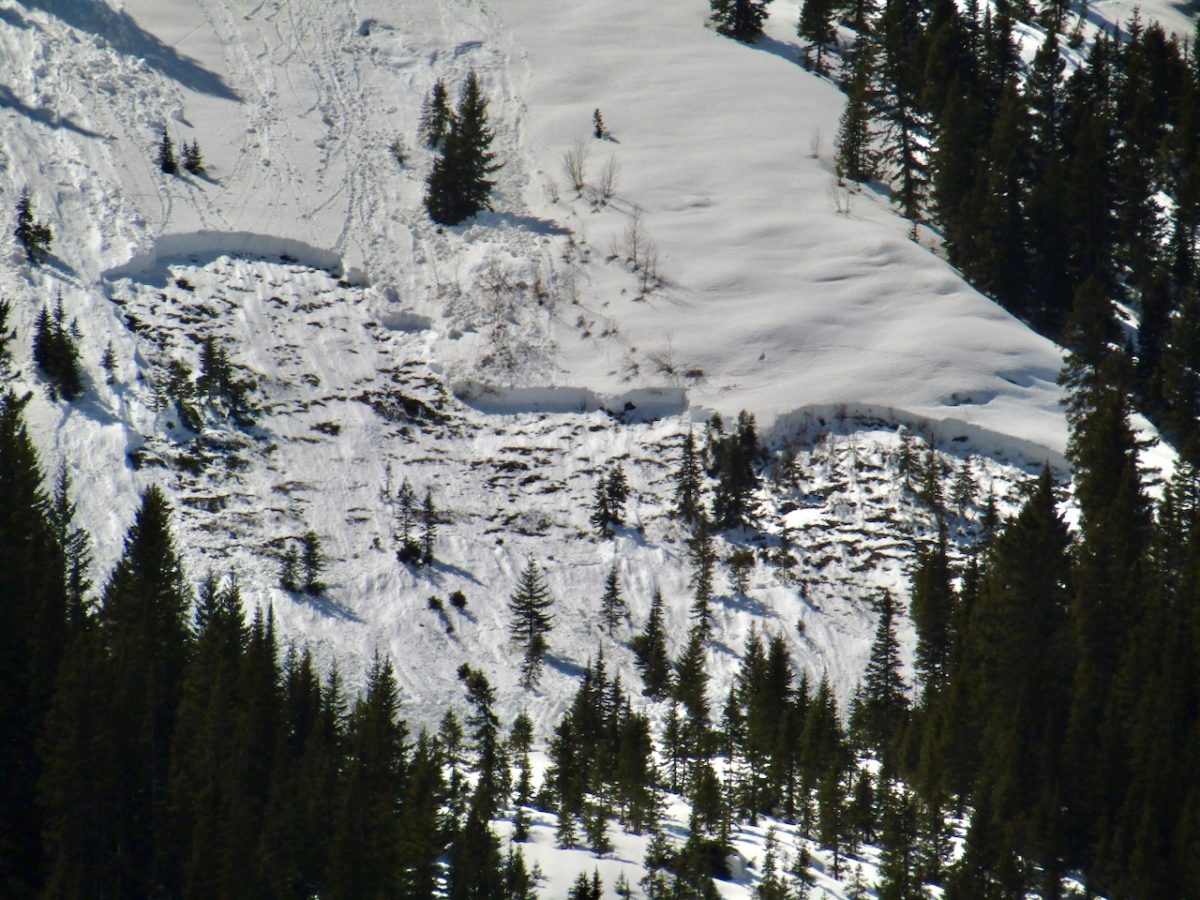Release of a cohesive layer of snow (a slab) caused by meltwater weakening the bond between the slab and an underlying weak layer.
Wet Slabs often occur during intense or prolonged warming events and/or rain-on-snow events. Wet Slabs are generally more destructive and more difficult to manage than Wet Loose avalanches; they can break widely and without clear warning signs. Because the timing and amount of meltwater draining into buried weak layers vary significantly from slope to slope, there is a high amount of variability and uncertainty in predicting Wet Slabs. Give yourself a wide safety buffer to handle the uncertainty. If the snowpack has refrozen overnight, you can reduce your risk by traveling early in the day or on colder slopes where surface crusts are strong and supportive to your weight. Otherwise, conservative terrain selection is prudent during significant warm-ups, especially when a poor snow structure or buried persistent weak layer first transitions from dry to very wet. The timing of this transition often varies by aspect or elevation.

Wet Slabs fail as meltwater compromises the strength of a buried weak layer, most commonly during intense or prolonged warmups or heavy rain-on-snow events. Credit: Crested Butte Avalanche Center

Although Wet Slabs flow relatively slowly compared to dry avalanches, they can entrain very destructive amounts of cement-like debris. Credit: Sawtooth Avalanche Center

If the snowpack did not refreeze overnight, or if your boots are sinking deeply into a saturated snowpack, conditions are more susceptible for Wet Slab avalanches. Credit: Colorado Avalanche Information Center


